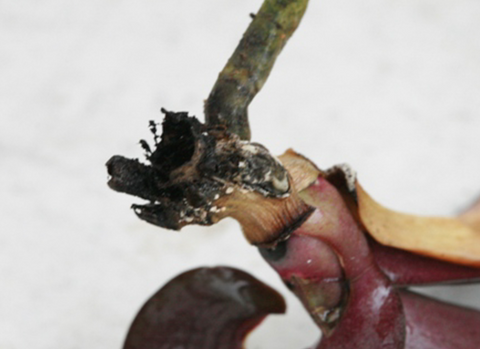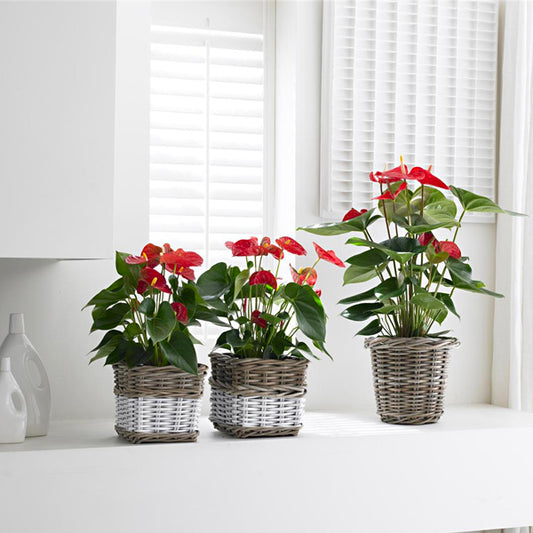Collar or Stem Rot
Collar Rot is characterised by the fast collapse and rotting of the roots, pseudobulbs, and lower leaf segments. The lowest portion of stems, pseudobulbs, leaf bases, and roots turn a creamy yellow colour. The pathogen invasion causes the damaged tissue to become brown, crumble, and degrade extremely quickly. The entire plant's base finally becomes girdled and destroyed by the illness. Affected leaves turn yellow, wilt, and drop off. On the afflicted tissue, little yellow or tan sclerotia that resemble mustard seeds appear. This is the fungus's dormant state.
Symptoms
Infection spreads to roots and leaves as the stem's base turns pale yellow and eventually dark brown. On stems, white fungal growth occasionally appears along with a sudden collapse and rotting of the roots, pseudobulbs, and leaves. High humidity and temperatures favour the growth of this fungus.

TREATMENT
Treatment of all fungal or bacterial diseases starts with the following:
- Isolate the plant from other plants in your collection.
- Remove or Cut all the infected leaves/canes/roots or parts of the plant with a sterilized tool.
- Each time the cutting tool contacts infected tissue, it should be sterilized before making a second cut.
- Chemical treatment with following on all plants in the collection.
Following Fungicide is effective:
- Chemical Name: Combimnation of Boscalid and Pyraclostrobin (Brand: Signum, Visma etc.) 1g/L of water or
- Chemical Name: Fludioxonil in 1g/L of water
Keeping the plants drier will help to keep the infection from spreading or appearing again. Isolate the plants and observe the plants for 1-2 weeks. And apply another round of control spray with any of the above fungicides. Spray the plants early morning and keep the plants dry after the spraying. Don't water the plants same day spray treatment is done.
PREVENTION
- Avoid Over-watering
- Provide good circulation
- Proper hygiene in the growing area
- Sterilization of cutting tools before every use
- Frequent Inspection
- Isolation of suspicious plants
- Precautionary control sprays


